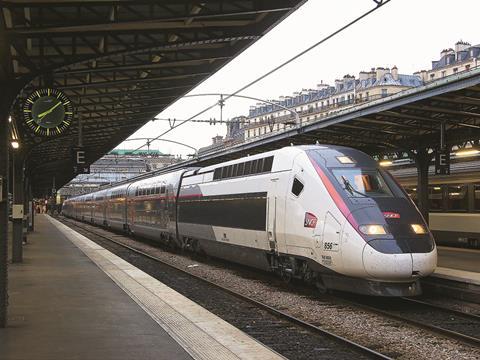
FRANCE: Having worked with the government to find ‘a balanced solution’ to maintaining employment at Alstom’s Belfort plant while modernising the TGV fleet ‘to deliver the greatest benefit for passengers’, SNCF announced on February 16 that it would be ordering 15 additional TGV Duplex trainsets for the Paris – Bordeaux route.
Under the Belfort rescue package announced in October 2016, it was expected that the government would itself order 15 high speed trainsets to be deployed on cross-country services on conventional infrastructure between Bordeaux and Marseille.
Instead, it has now been agreed that SNCF will purchase the 15 trainsets, following on from a current order for 40. This will save €150m that it would have spent on refurbishing 24 TGVs. SNCF also says that it will benefit from a younger, homogenous double-deck fleet for Atlantique services, offering more capacity.
This is expected to both improve the efficiency and reduce the cost of rolling stock maintenance, with savings to be made in spare parts in particular as the number of TGV classes is reduced from six to three. Under the new order, the first six trainsets are due to be delivered in 2019, with the remaining nine to follow in 2020 when older trainsets will be withdrawn, some now over 35 years old.
The Belfort rescue package also included an order from the government for 30 electric trainsets to be deployed on the TET network. According to SNCF, a call for tenders is now being prepared by the transport ministry and is due to be issued during the first half of 2017, with the new fleet due to enter service by 2022 on routes including Bordeaux – Marseille.

















